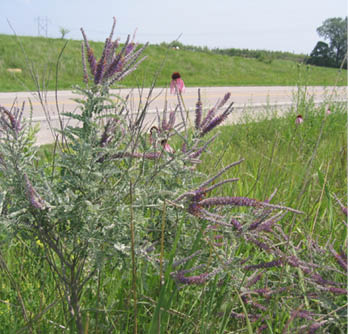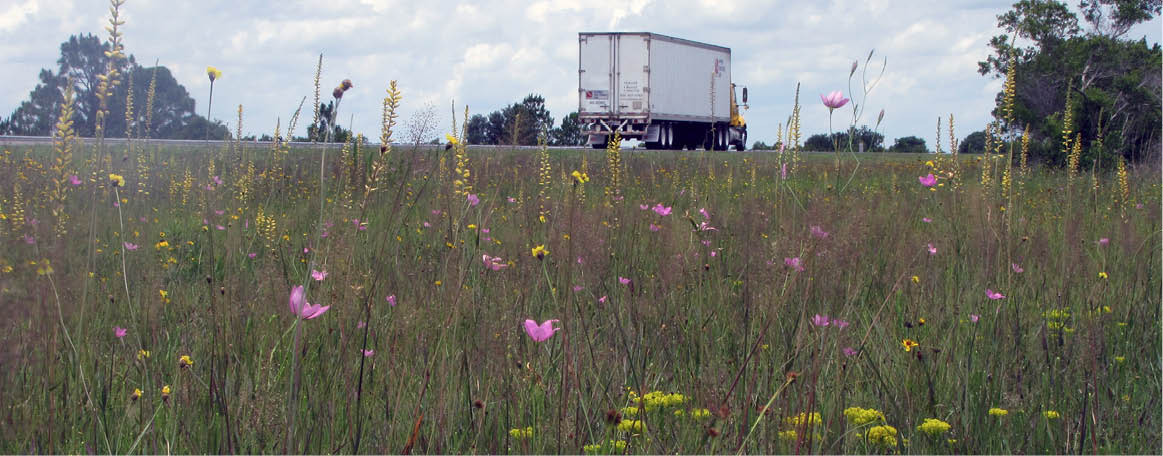ROADSIDE REVEGETATION
An Integrated Approach to Establishing Native Plants and Pollinator Habitat
8.2 Florida resolves to protect wildflowers on roadsides

_20IA_20LRTF_Maria_20Urice.jpg)
Photo credit: Maria Urice
The following case study from Florida highlights a unique citizen-based effort to protect pollinator habitat through county policy resolutions that were subsequently supported by pollinator-friendly management plans.
Florida, home to a great diversity of plants and animals, was once dubbed the "land of flowers" by a Spanish explorer in 1513. Many of these wildflowers can be found on Florida's 200,000 acres of roadsides. However, wildflower proliferation along roadsides can be limited by the frequency of mowing. Roadside mowing can be very intensive in some parts of Florida, particularly in urban areas. When showy stands of wildflowers were mowed during bloom when pollinators were present, concerned citizens contacted Florida DOT. Jeff Caster, State Transportation Landscape Architect with Florida DOT, describes the situation: "There would be butterflies on the side of the road feasting on the native vegetation and we would come in and mow it all down and we would get people naturally upset with us. Environmentally conscious citizens called us to complain that we were mowing down wildflowers and butterfly habitat."
Florida DOT isn't able to alter their management plans based on direct requests from a garden club or an individual that wants less roadside mowing. But citizens in Wakulla County found another way. They worked with their county commissioners to draft a resolution that made it county policy to preserve existing stands of roadside wildflowers. Then, county staff worked with Florida DOT to develop a roadside management plan to accommodate the resolution.
Recognizing the cultural, historical, and environmental significance of native wildflowers, 27 out of Florida's 67 counties have moved to adopt similar wildflower resolutions. These counties "make a commitment to saying they want to enjoy the visibility of wildflowers for whatever reason, some do it to attract nature-based tourism, some doing it to help their farms," Caster says. A model resolution can be found on the Florida Wildflower Foundation's website.
Florida's unique grassroots approach to protecting wildflowers at the county level has great potential for pollinator conservation.

Native wildflowers along a Florida turnpike.
Photo credit: Jeff Norcini

